Fred Olsen
-
- Wind Energy Workboats: A US Offshore Build-up Maritime Reporter, Nov 2017 #60
Block Island — U.S.-based Deepwater Wind’s five-turbine, 30-megawatt wind park — was the first. It showed what was possible, what might not have been optimal and how long it all takes. Since then, incentives for onshore-wind have been curbed, while a tax credit for offshore wind has been extended. Wind parks are in the works. States have power companies buying offshore wind energy, and experienced offshore operators are hiring the new wind-service vessels from elements of their oil-and-gas supply chain. The Jones Act, too, is being overcome by fleet owners and designers joining the U.S. offshore wind build-up.
“The algorithms are built on top of the dynamic-positioning (controls) — accelerate, decelerate, wait, (throttle). Due to the repetition involved (in operating a wind-turbine service vessel’s walk-to-work platform, or W2W), you need an auto-stop mechanism. It’s too much for one person,” a source close to Norwegian tug owner Ostensjo’s two wind-service vessel new-builds tells us over coffee in downtown Norway.A survey confirms the preponderance of Norway’s offshore fleet owners are building new or converting vessels to capture wind-service market share. So, too, are the Dutch, the Danes and the Brits — and, yes, the Americans. Some Northern European ship owners say they’re content to serve the world’s hitherto largest offshore wind markets: Britain and Germany. “America,” for these, is too “wait-and-see.”Some of their peers, however, have secured U.S. partners, builders or design offices to serve what market watchers know is the largest undeveloped wind market in the world: at least five U.S. coastal states have held successive, successful offshore lease sales for some of the over 2,000,000 acres in offshore wind concessions under auction. Populace New York and Massachusetts (the latter with mega-project bids due this December 2017) are notable for total acreage offerings of at least 750,000 acres, according to numbers from the Department of the Interior and the Bureau of Ocean Energy Management. New York in 2017 qualified 14 companies for its sixth lease sale, part of a commitment to 2.4 gigawatts of installed offshore wind energy hoped for by 2030. The first is Deepwater Wind’s South Fork, although Statoil now also has rights to areas acreage. Ship owners would be wise to get to know the unfamiliar company names winning leases in New Jersey (offering over 345,000 acres), North Carolina (429,000 acres), Rhode Island (Deepwater Wind) or Maryland, where U.S. Wind Inc. plans a 248 MW project for 2020 and Skipjack Offshore Energy LLC’s a 120 MW windfarm due 2022.North Carolina in 2017 qualified nine companies to bid in its seventh offshore lease auction, and in March 2017 an auction for the Kitty Hawk Wind Energy Area, or WEA, for 122,405 acres went to Avangrid Renewables with a winning bid of $9.1 million. Projects now tend to dwarf the pioneering five-turbine, $350 million Block Island project of 2014-2016.Fortunes AlignBOEM checks the legal, financial and technical wherewithal of offshore operators now deep in planning that’ll make them U.S. offshore grid owners. Statoil won the wind lease sale for 80,000 acres offshore New York and plans a wind park of up to 600 MW in the New York Wind Energy Area, or WEA, 30 to 60 miles offshore in water 65 to 130 feet deep. “The U.S. is a key emerging market for offshore wind — both bottom-fixed and floating — with significant potential along both the east and west coasts,” the operator says, echoing a DOI report. Like the others, Statoil’s an offshore stakeholder elsewhere: at Sherrington Shoal off the U.K. since 2012 and at a just-installed, first-ever floating wind park for its lauded Hywind turbines offshore Scotland.Foreign FirstsThe largest U.S. wind farm is expected to be U.S. Wind’s $2.5 billion installation 12 miles off the coast of Ocean City, Md. U.S. Wind brings international experience via its Italian leadership and will need it to install a planned 187 turbines by 2020. Despite such apparent needs for vessels, our calls to U.S. operators about their future shipping needs produced “reluctance”, although there are good reasons for caution: Reason No. 1 is the not-yet assembled offshore wind supply chain.There’s another reason: The Block Island, RI, project revealed that while jack-up vessels could install wind-turbines with fair ease and security, smaller “support jack-ups” available locally appeared to some to struggle while handling large, unwieldy turbine components while being buffeted by waves. Cells, rotor blades, shafts, flanges and towers require scale or risks appear high. Word of Block Island’s “demo” spread via veteran deck hands who had compared small local hires to the large installation vessel, Bold Tern, of Block Island’s capable hire, Fred Olsen Windcarrier.New Designs“A typical windfarm support vessel,” says Vard Design’s concepts VP, Kjell Morten Urke, of the Vard 4, a type offered American builders via the company’s U.S. offices. “Typical” implied a norm has been established by Europe’s veteran offshore wind industry (now over 20 years old), as exemplified by Fred Olsen Windcarrier. Vard, too, is confident of its U.S. clout. “We’re ready. We’re in Holland right not presenting the (just announced wind-vessel) design. We may not take much market share in install vessels but in cable-layers, hook-up and service. We’ll focus on that,” Mr. Urke says.GustoMSC — a wind pioneer with a hand in “80 percent” of the offshore wind-installation equipment out there, including Bold Tern and Brave Tern — has adapted a new jack-up installation concept to its view of the U.S. wind market as “emerging”. GustoMSC offers shipyards and the growing numbers of U.S. wind operators self-propelled and unpropelled jack-ups, the latter for “the more risk-averse.”In October 2017, “the economical, safe and efficient” SEA-3250 LT installation jack-up was unveiled: “Currently there is no equipment available in the U.S. that is capable of installing present and future heavy foundations and turbines, due to insufficient carrying & lifting capability in terms of both capacity and height,” the company says, echoing the view in European. The SEA 3250 LT joins the larger, wind-capable self-propelled NG-98000C-US and its NG-3750C feeder unit in solving “this (financial and installation-capacity) bottleneck.” The SEA 3250 can carry two of the largest turbines “while underway” to the installation site. Heavy lifts to heights of over 130 meters — new normal for turbines sizes now reaching 12 MW— are possible “in an area where technicians are performing assembly tasks at the same time”. Interestingly, this GustoMSC design can “serve as a Jones Act compliant feeder solution to a larger foreign vessel”.From New Orleans, lift-boat maker AK Suda has also joined the fray recently by developing its JG series of wind-turbine installation vessel, or WTIV. The first, JG6000P, “works within all U.S. staging ports” and can carry and install 8 MW turbines. AK Suda and GustoMSC might represent the bulk of U.S. wind-installation vessel offerings.Europeans ContrastsSaving enormous sums, the Hamburg-based Fred Olsen Windcarrier’s jack-up boat crossed the Atlantic with wind-turbine components aboard, a first for the vessel type and a hard-to-match feat. “Fred Olsen Windcarrier sees the U.S. as an important and potentially world-leading offshore wind market,” business-development manager, Stuart Thornton, writes in an email. The company’s twin lift-boats can install any of today’s turbine sizes to fixed, seabed foundations.A2Sea is typical of the seasoned, offshore wind European supply chain with links to Statoil, including its 67-turbine Dudgeon park, its just-installed Racebank wind park and a September 2017 contract for the Merkur project in Holland with a Sea Challenger fresh from the Racebank job of summer 2017!While a DOE report confirms the “lack of a project pipeline” has held up the U.S. market, A2Sea confirms Europe’s projects keep the company busy. Like A2Sea, European turbine maker Siemens Gamesa seems to busy for the U.S. market: “No offshore projects for now. It’s a market where we see potential in the next few years. It’s an important market of the future for us,” they write in a letter. Like the U.S. grid operators “to-be”, they can only be vague when it comes to vessel needs. “We work with nearly all operators of wind-turbine installation vessels. The challenge in the U.S. is that … If you need a jack-up for a turbine installation, it might be a challenge.”Specialty VesselsWhen this writer visited the East of England years ago, Britain was seeing its first wind turbines novel designs for crew-transfer vessels. For the uninitiated, there was something worrying about the bump-up against the grouted flanges turbine towers rested on. Grid operators then complained of suppliers’ rickety finances.Today’s operator-supplier bonds are robust, as illustrated by Esvagt signing a 15-year contract with MHI Vestas Offshore Wind to deploy SOVs to both near-shore and remote European wind projects in need of accommodation, W2W and the company’s deployable safe transfer boats, or STBs, for technicians, tools and turbine spares. In 2010, ESVAGT brought SOVs to the market that offered offshore-style leisure, office, storage and workshops of special interest should floating wind take projects succeed farther out into the U.S. 200-mile limit, as is envisioned.So, is the U.S. an Esvagt target market? “The short answer is no,” says business development manager, Ole Ditlev Nielsen. “ESVAGT aims to follow and assist the expansion of the renewable industry, where SOV’s create value. We will therefore be ready to follow our customers out of Europe as well. This requires that the local regulations enable ESVAGT to perform its services there.”Meanwhile, British advocacy Subsea UK now advises its members to seek wind work to wherever it may be to offset lost oil-and-gas opportunity. In August 2017, the organization put world offshore-wind spending at over £350 billion through to 2026.(As published in the November 2017 edition of Maritime Reporter & Engineering News) -
- Wind Energy: The Good News in Offshore Marine Technology, Sep 2017 #40
“demo” spread via veteran deck hands who had compared small local hires to the large installation vessel, Bold Tern, of Block Island’s capable hire, Fred Olsen Windcarrier. New Designs “A typical windfarm support vessel,” said Vard Design’s concepts VP, Kjell Morten Urke, of the Vard 4, a type offered
-
- The Jones Act and Offshore Wind in Light of the Aeolus Energy Announcement Marine News, Jul 2018 #30
at the Block Island demonstration windfarm, combined the use of a foreign-flagged heavy-lift jack-up vessel, assisted by purpose-built lift-boats. Fred Olsen Windcarrier, a Norwegian developer, supplied the jack-up, which transported the nacelles to Rhode Island from Saint Nazaire, France. Once at the
-
- Offshore wind: One-stop Power Conversion Marine Technology, May 2019 #40
Deyang. Image Courtesy Yaskawa’s The SwitchMarine scaleIn the first encounter with large offshore turbines off the US Eastern Seaboard, the site of Fred Olsen Wind Carrier’s 15,000 GT Brave Tern jack-up wind installation vessels wind installation vessel easily handling and installing turbines was
-
- Offshore wind: One-stop power conversion Maritime Reporter, Jul 2019 #23
motor from The Switch. Image Courtesy The SwitchMarine scaleIn the first encounter with large offshore turbines off the US Eastern Seaboard, the site of Fred Olsen Wind Carrier’s 15,000 GT Brave Tern jack-up wind installation vessels wind installation vessel easily handling and installing turbines was
-
- M a c G r e g o r - N a v i r e To Build M o v e a b l e Link Span For Oslo Port Authority Maritime Reporter, Apr 1986 #35
circles of the largest vehicles. The new unit will be installed at the 352-meter-long Sorenga Quay on the port's Bispevika Wharf, mainly used by Fred Olsen Lines. For further information, including detailed free literature on Mac- Gregor-Navire equipment and systems, C i r c l e 6 2 on Reader Service Car
-
- MSC Europe Experiencing Steady Growth Stream Maritime Reporter, Feb 2000 #27
for Israeli-based Athissa Shipping. MSC provided ship units, project management and fitters for installation of duty free and other shops onboard Fred Olsen's MV Black Watch. The company also installed galley modifications and waste handling equipment onboard Arcalia Shipping's Princess Danae at A&P
-
- Onstream Project To Optimize FPSO Design Maritime Reporter, Jan 2001 #40
, Statoil, Mineral Management Service, ABB, ABS, Maersk, DNV, Lloyd's Register, Bouygues Offshore, Bluewater, Bureau Veritas, Norsk Hydro, Fred Olsen Energy, and the U.S. Coast Guard
-
- Mitsui Delivers Big Ore Carrier With M a n y Energy-Saving Features Maritime Reporter, May 1985 #11
tower. Such towershaped superstructures have been used by MES in the past for the construction of only four vessels— three tankers built in 1965 for Fred Olsen of Norway, and another in 1968 for Anders Wilhelmsen & Company, also of Norway. Reflecting the current increasing need for energy efficiency
-
- Cruise Ship Refit: Business Steady at Blohm + Voss Maritime Reporter, Aug 2018 #51
. Balmoral received an overhaul of the hatch covers and Boudicca was in for general repairs. These two ship fixes extended a 45-year relationship with Fred Olsen Cruise Line vessels, as the yard has completed more than 100 projects with the company
-
- Astican & Astander Continue to Invest Maritime Reporter, Aug 2016 #60
top priority to Astander and Astican, as it has a list of repeat customers. This year, companies like Cruise Management International, Silversea Cruises, Fred Olsen Express, Naviera Armas or Britanny Ferries have brought part of their fleet in for service. (As published in the September 2016 edition of
-
- Fast Ferries Still a Core Market for Austal Maritime Reporter, Jan 2004 #20
freight lane metres by more than 35%. At the same time passenger comfort will increase by 25% to 40% depending on the routes we operate." said Fred Olsen Jr., the company's Executive Chairman. The Spanish company took delivery of its first Austal-built fast ferry last September in the form of the
-
 )
April 2024 - Maritime Reporter and Engineering News page: 48
)
April 2024 - Maritime Reporter and Engineering News page: 48WA 6102, Australia , tel:61 VESSEL BUILDING: RESEARCH, USA , tel:(508) 564-7640, [email protected] contact: 429498089, [email protected] Fred Hegg, Falmouth.com PASSENGER, CATAMARAN, PATROL MEMS MOTION SENSING REMOTELY OPERATED VEHICLES AND SURVEY Silicon Sensing Systems Ltd, Clittaford
-
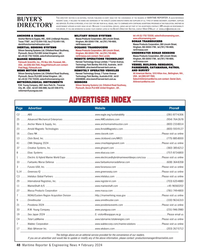 )
February 2024 - Maritime Reporter and Engineering News page: 48
)
February 2024 - Maritime Reporter and Engineering News page: 48WA 6102, Australia , tel:61 VESSEL BUILDING: RESEARCH, USA , tel:(508) 564-7640, [email protected] contact: 429498089, [email protected] Fred Hegg, Falmouth.com PASSENGER, CATAMARAN, PATROL MEMS MOTION SENSING REMOTELY OPERATED VEHICLES AND SURVEY Silicon Sensing Systems Ltd, Clittaford
-
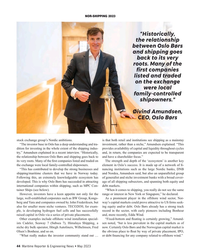 )
May 2023 - Maritime Reporter and Engineering News page: 44
)
May 2023 - Maritime Reporter and Engineering News page: 44, well-established corporates such as BW Group, Kongs- As a prominent player in the offshore wind sector, Nor- berg and Yara and companies owned by John Frederiksen, but way’s capital markets could prove attractive to US ? rms seek- also for smaller more niche ventures. TECO2030, for exam- ing equity and/or
-
 )
September 2022 - Marine Technology Reporter page: 74
)
September 2022 - Marine Technology Reporter page: 74100 cause is hurry, worry, or what not.” is XMT only, no RCV. There is no signal from the lander that At an 1877 society meeting on steam boats, engineer Alfred the release is in progress. We scan the area around the boat, Holt, reported, “It is found that anything that can go wrong at sea waiting for the
-
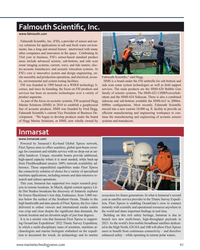 )
September 2022 - Marine Technology Reporter page: 41
)
September 2022 - Marine Technology Reporter page: 41Solutions (HMS) in 2010 to establish a geophysical 6000m con? gurations. Most recently, Falmouth Scienti? c line of acoustic products. HMS was founded by Fred Hegg, moved into a new custom 10,000 sq. ft. facility to provide an Falmouth Scienti? c’s current Vice President of Business De- ef? cient manufacturing
-
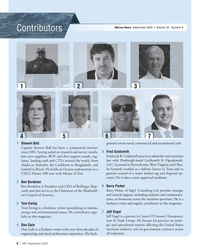 )
September 2022 - Marine News page: 6
)
September 2022 - Marine News page: 6naval, commercial and recreational craft. Captain Stewart Bell has been a commercial mariner since 2001, having sailed on research and survey vessels, 5 Fred Goldsmith fast crew suppliers, ROV and dive support vessels, tug- Frederick B. Goldsmith practices admiralty and maritime boats, landing craft and
-
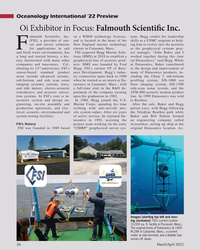 )
March 2022 - Marine Technology Reporter page: 56
)
March 2022 - Marine Technology Reporter page: 56intertwined with many other geophysical line of acoustic prod- (at Datasonics),” said Hegg. While companies and innovators. Cel- ucts. HMS was founded by Fred at Datasonics, Baker contributed rd ebrating its 33 anniversary, FSI’s Hegg, FSI’s current VP of Busi- to the design and improvement of sensor-based
-
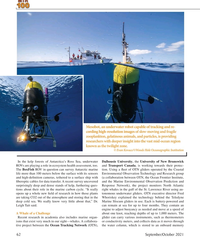 )
September 2021 - Marine Technology Reporter page: 62
)
September 2021 - Marine Technology Reporter page: 62gulf of the St. Lawrence River using au- opens up a whole new ? eld of research in how those plants tonomous underwater gliders. OTN executive director Fred are taking CO2 out of the atmosphere and storing that in the Whoriskey explained the technology behind the Teledyne deep cold sea. We really know
-
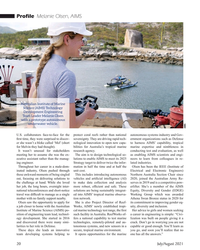 )
July 2021 - Marine Technology Reporter page: 20
)
July 2021 - Marine Technology Reporter page: 20Profile Melanie Olsen, AIMS Australian Institute of Marine Science (AIMS) Technology Development Engineering Team Leader Melanie Olsen with a prototype autonomous underwater vehicle. AIMS U.S. collaborators face-to-face for the protect coral reefs rather than national autonomous systems industry
-
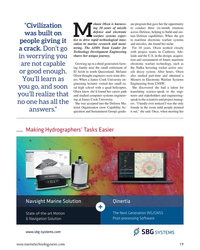 )
July 2021 - Marine Technology Reporter page: 19
)
July 2021 - Marine Technology Reporter page: 19elanie Olsen is harness- ate program that gave her the opportunity “Civilization ing 10 years of missile to conduct three six-month rotations defense and electronic across Defense, helping to build and sus- was built on M warfare systems exper- tain Defense capabilities. When she got tise to drive
-
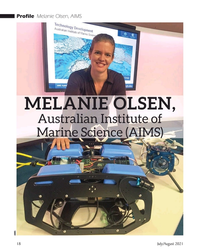 )
July 2021 - Marine Technology Reporter page: 18
)
July 2021 - Marine Technology Reporter page: 18Profile Melanie Olsen, AIMS MELANIE OLSEN, Australian Institute of Marine Science (AIMS) AIMS 18 July/August 2021 MTR #5 (18-33).indd 18 7/30/2021 11:15:55 AM
-
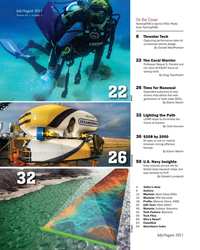 )
July 2021 - Marine Technology Reporter page: 2
)
July 2021 - Marine Technology Reporter page: 2July/August 2021 Number ume 64 ume 4 • N Num Vol ol ol lume e 64 4 • Number Vo Volume 64 • Number 5 5 5olume 64 • Numb b 564 • Number 5 On the Cover TechnipFMC’s Gemini ROV. Photo from TechnipFMC. 8 Thruster Tech Capturing performance date for unmanned vehicle design. By Donald MacPherson 22 The Coral
-
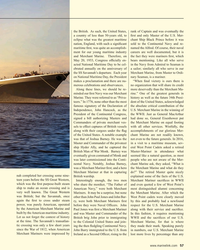 )
May 2021 - Maritime Reporter and Engineering News page: 57
)
May 2021 - Maritime Reporter and Engineering News page: 57visit British Man of War Monk. Barney was Continental Navy and renamed the Al- to a maritime museum, several West eventually given command of Monk and fred. Of course, their naval careers are Point Cadets asked a retired Master- was later commissioned into the Conti- well documented, but it is the fact
-
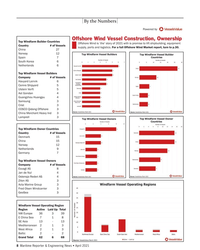 )
April 2021 - Maritime Reporter and Engineering News page: 8
)
April 2021 - Maritime Reporter and Engineering News page: 89 Germany 7 Top Windfarm Vessel Owners Company # of Vessels Esvagt AS 8 Jan de Nul 4 Ostensjo Rederi AS 4 Ziton AS 3 Acta Marine Group 3 Fred Olsen Windcarrier 3 GeoSea 3 Windfarm Vessel Operating Region Region Active Laid Up Total NW Europe 36 3 39 E China Sea 7 1 8 SE Asia 13 - 13 Mediterranean
-
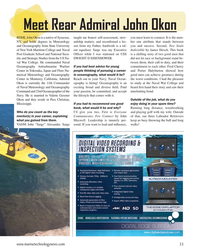 )
October 2020 - Marine Technology Reporter page: 33
)
October 2020 - Marine Technology Reporter page: 33commanded Naval tween them, their call to duty, and their Oceanography Antisubmarine Warfare If you had best advice for young commitment to each other. Fred Cherry Center in Yokosuka, Japan and Fleet Nu- people thinking of pursuing a career and Porter Halyburton showed how merical Meteorology and Oceanography
-
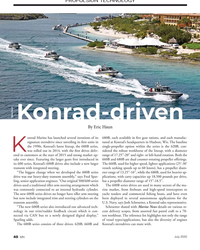 )
July 2020 - Marine News page: 40
)
July 2020 - Marine News page: 40change when we developed the 600B series eter range of 13.25”-16”, while the 680B, used for heavier ap- drive was our heavy-duty transom assembly,” says Fred Spar- plications, with carry capacities up 18,500 pounds per drive, ling, senior application engineer. “Our original 500/600 series has a propeller
-
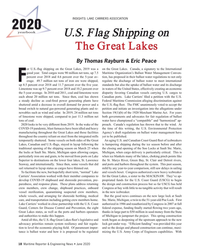 )
June 2020 - Maritime Reporter and Engineering News page: 18
)
June 2020 - Maritime Reporter and Engineering News page: 18to each about 20 million net tons. Since then, coal has shown Canadian ports. Lake Carriers’ fled a petition with the U.S. a steady decline as coal-fred power generating plants have Federal Maritime Commission alleging discrimination against shuttered amid a decrease in overall demand for power and
-
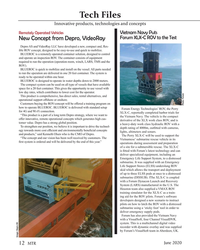 )
June 2020 - Marine Technology Reporter page: 12
)
June 2020 - Marine Technology Reporter page: 12Tech Files Innovative products, technologies and concepts Vietnam Navy Puts Remotely Operated Vehicles Forum XLX-C ROV to the Test New Concept from Depro, VideoRay Depro AS and VideoRay LLC have developed a new, compact and, fex- ible ROV concept, designed to be easy-to-use and quick to mobilize. BLUEROC
-
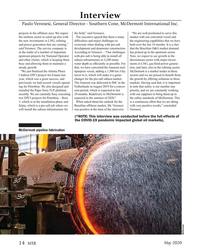 )
May 2020 - Marine Technology Reporter page: 14
)
May 2020 - Marine Technology Reporter page: 14in 2,200 meter downstream sector with major invest- busy and allowing them to maintain a water depth as effciently as possible. For ments in LNG, gas-fred power genera- steady growth. that, we have converted the Amazon mul- tion, and later, also in the refning sector. “We just fnalized the Atlanta Phase
-
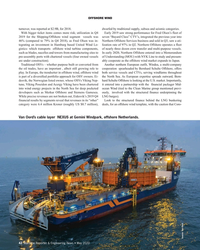 )
May 2020 - Maritime Reporter and Engineering News page: 42
)
May 2020 - Maritime Reporter and Engineering News page: 42by traditional supply, subsea and seismic categories. With bigger ticket items comes more risk; utilization in Q4 Early 2019 saw strong performance for Fred Olsen’s fleet of 2019 for the Shipping/Offshore wind segment vessels was seven “Bayard Class” CTV’s, integrated the previous year into 46% (compared
-
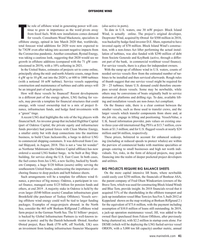 )
May 2020 - Maritime Reporter and Engineering News page: 41
)
May 2020 - Maritime Reporter and Engineering News page: 41fi- could easily cost $250 million, the financials of Bonheur ASA, nance, a province of big money; Oaktree, a participant in ves- the parent company of Fred Olsen Windcarriers (owners of the sel finance, managed some $125 billion for pension funds and Brave Tern, which was used for constructing Block Island
-
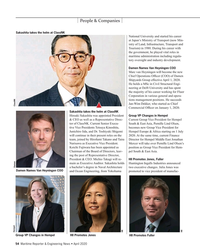 )
April 2020 - Maritime Reporter and Engineering News page: 54
)
April 2020 - Maritime Reporter and Engineering News page: 54People & Companies Sakashita takes the helm at ClassNK National University and started his career at Japan’s Ministry of Transport (now Min- istry of Land, Infrastructure, Transport and Tourism) in 1980. During his career with the government, he played vital roles in maritime administration including
-
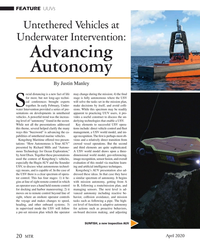 )
April 2020 - Marine Technology Reporter page: 20
)
April 2020 - Marine Technology Reporter page: 20FEATURE UUVs Untethered Vehicles at Underwater Intervention: Advancing Autonomy By Justin Manley ocial distancing is a new fact of life may change during the mission; 4) the fnal for most, but not long-ago techni- stage is fully autonomous where the USV cal conferences brought experts will solve the
-
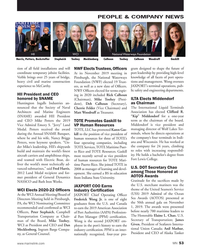 )
December 2019 - Marine News page: 53
)
December 2019 - Marine News page: 53resources for TOTE Mari- liver the world’s most technically ad- time Puerto Rico. She joined TOTE in U.S. DOT Secretary Chao vanced submarines,” said Fred Harris, 2008 as manager of learning and devel- among Those Honored at 2012 Land Medal recipient and for- opment. She earned a BS in education AOTOS
